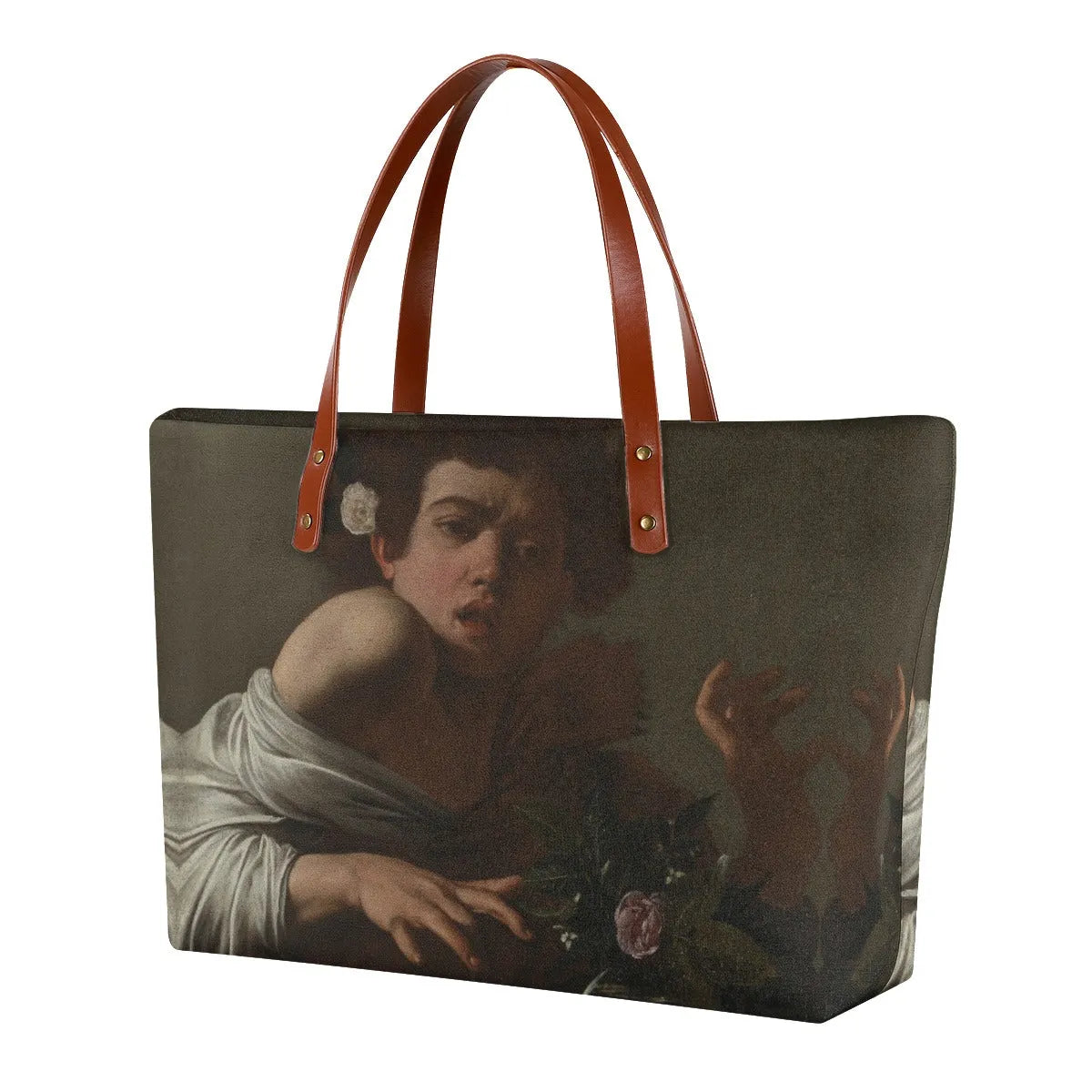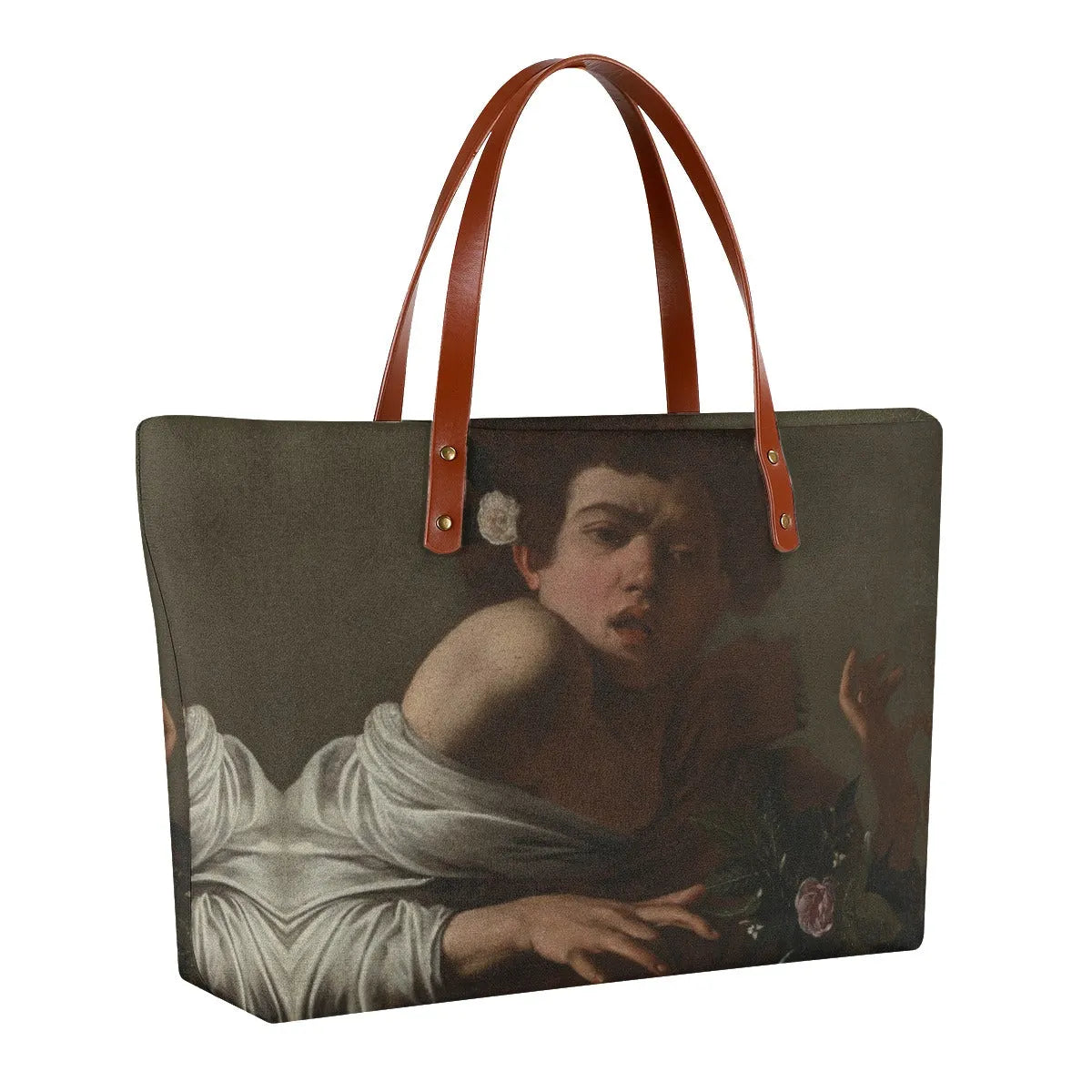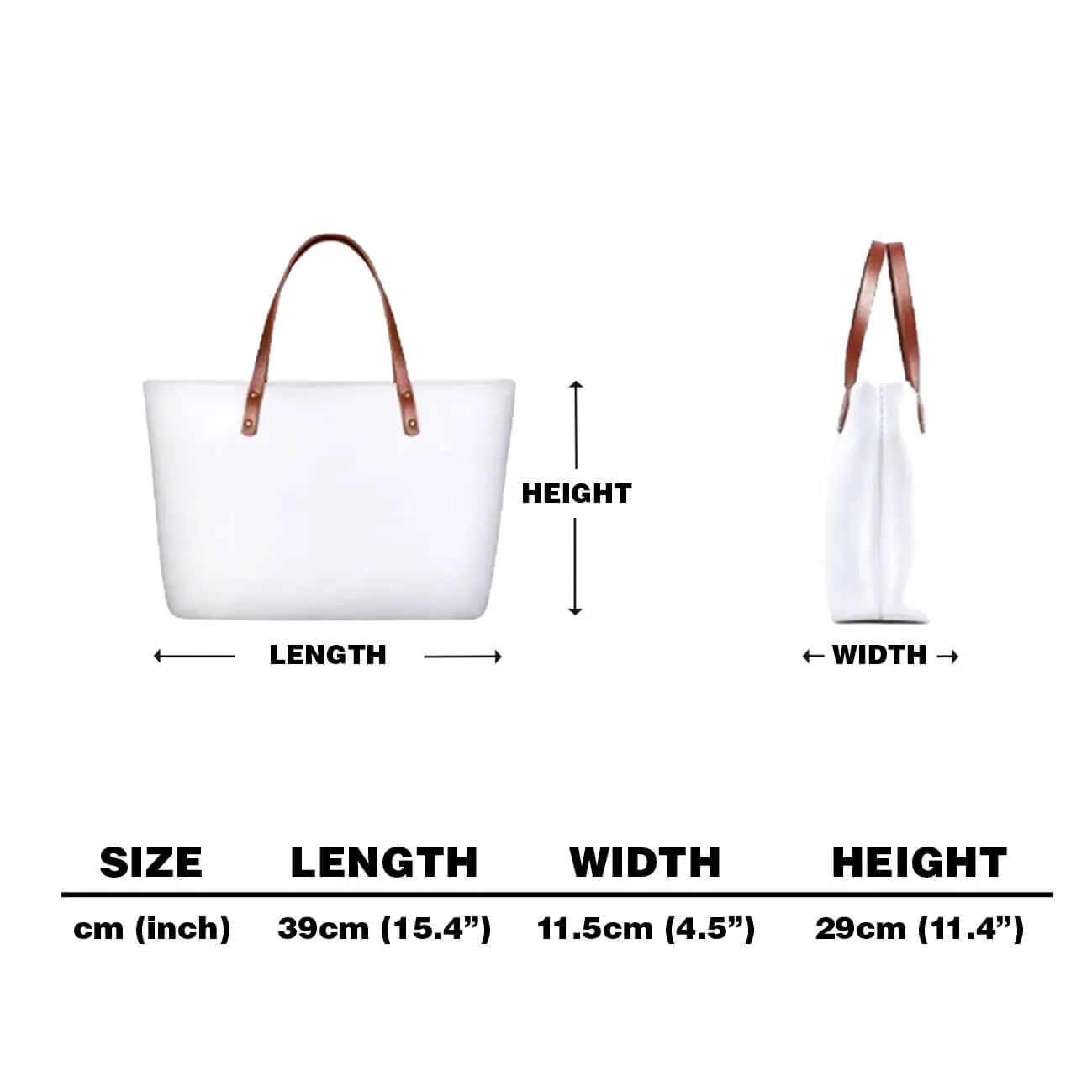



Boy Bitten by a Lizard Caravaggio Tote Bag
Step into a world of timeless beauty and art with our exclusive Boy Bitten by a Lizard Caravaggio Tote Bag. This exquisite masterpiece showcases Caravaggio's iconic painting, meticulously reproduced on high-quality fabric. Elevate your style while carrying a piece of art that sparks conversation wherever you go.
Carry more than just belongings – carry a statement. The Boy Bitten by a Lizard Tote Bag is more than an accessory; it's a testament to your appreciation for art and your distinctive sense of style. Be the center of attention as you effortlessly merge classical art with contemporary fashion, showcasing your unique taste to the world.
- Made of Diving Cloth
- Waterproof Fabric
- Large capacity
- Black zipper and Lining
- Brown strap
- Double-sided Famous Painting Art
Caravaggio's paintings were groundbreaking in their naturalistic approach. He rejected the idealized and polished representations of the Renaissance in favor of depicting people as he saw them, flaws and all. Look at all of Caravaggio's Iconic Pain
About the artwork
We are aiming to have your order dispatched from our facility within 48 hours. However, please bear with us in case we are spending extra time in checking / perfecting your items, particularly during the peak season around end of the year. This does not include weekends or holidays.
Purchases made after 6pm PT will not be shipped out until the next business day. If you order after 6pm PT on a friday, your order will likely be shipped out on the following monday. For more information click here.
We provide a return policy, allowing customers to return products within a specified timeframe if they are not completely satisfied. For more information click here.
We offer a range of secure payment methods, including major credit cards and debit cards such as Mastercard, Visa, and American Express. Additionally, we support digital wallets like Apple Pay and allow for seamless transactions through trusted platforms like PayPal. For more information click here.
Choose options




20% Off Everything - Limited time only.
Enjoy Free Shipping on All Orders!
